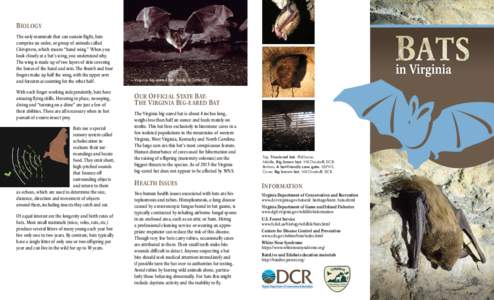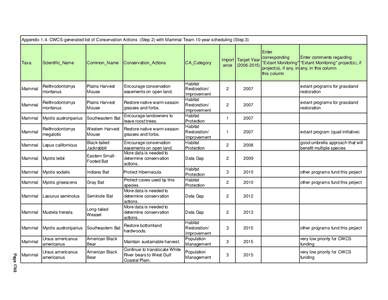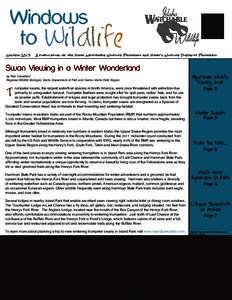 Date: 2015-09-17 21:12:04Bats of the United States Mouse-eared bats Vesper bats Bats of Canada Virginia big-eared bat White nose syndrome Bat Little brown bat Indiana bat Northern long-eared bat Southeastern myotis Corynorhinus | |  BIOLOGY The only mammals that can sustain flight, bats comprise an order, or group of animals called Chiroptera, which means “hand wing.” When you look closely at a bat’s wing, you understand why. The wing is made BIOLOGY The only mammals that can sustain flight, bats comprise an order, or group of animals called Chiroptera, which means “hand wing.” When you look closely at a bat’s wing, you understand why. The wing is made
Add to Reading ListSource URL: www.dcr.virginia.govDownload Document from Source Website File Size: 381,18 KBShare Document on Facebook
|






 BIOLOGY The only mammals that can sustain flight, bats comprise an order, or group of animals called Chiroptera, which means “hand wing.” When you look closely at a bat’s wing, you understand why. The wing is made
BIOLOGY The only mammals that can sustain flight, bats comprise an order, or group of animals called Chiroptera, which means “hand wing.” When you look closely at a bat’s wing, you understand why. The wing is made